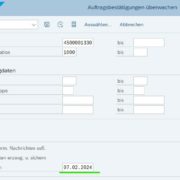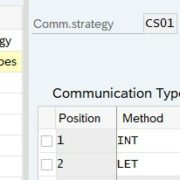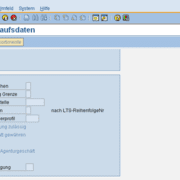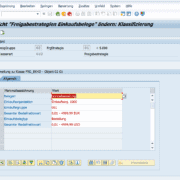Efficient SAP Ordering – Create, Display and Keep an Overview
If you google “SAP order”, you are looking for an efficient way to manage orders in SAP. We’ll show you how to quickly and correctly create and view a purchase order in SAP, with steps you can implement immediately.
The most important facts at a glance
- An SAP purchase order is a central procurement order consisting of a purchase order header and several purchase order items, created via transaction ME21N, which records all relevant data from requisition to delivery.
- The creation process of an SAP purchase order includes selecting suppliers and materials, entering quantities and prices, and setting delivery and payment terms to ensure efficient procurement.
- The monitoring and analysis of SAP orders enables optimization of the purchasing process. New features in SAP S/4HANA offer adaptability, transparency, and efficiency in the ordering process.
Basics of SAP Ordering
An SAP purchase order is a procurement order by which a customer requests a supplier to deliver certain quantities of products on specific dates. It is a digital, clear and central method of managing goods or services. The purchase order consists of a purchase order header and any purchase order items. The order header contains data that is relevant to the entire order, and each order line represents a product or service. The document header of an SAP purchase order contains all data that relates to the entire procurement order. This is the basis for entering the document before specific purchase order lines are added. Such a structure allows us to track and manage the entire process from requisition to delivery. To create or change an order, please use transaction ME21N. This is the first of many transactions you will make in SAP to manage the entire process. With this knowledge, you are now ready to take the first step and create an SAP purchase order. But how exactly do we do that?

Creating an SAP purchase order: step-by-step instructions
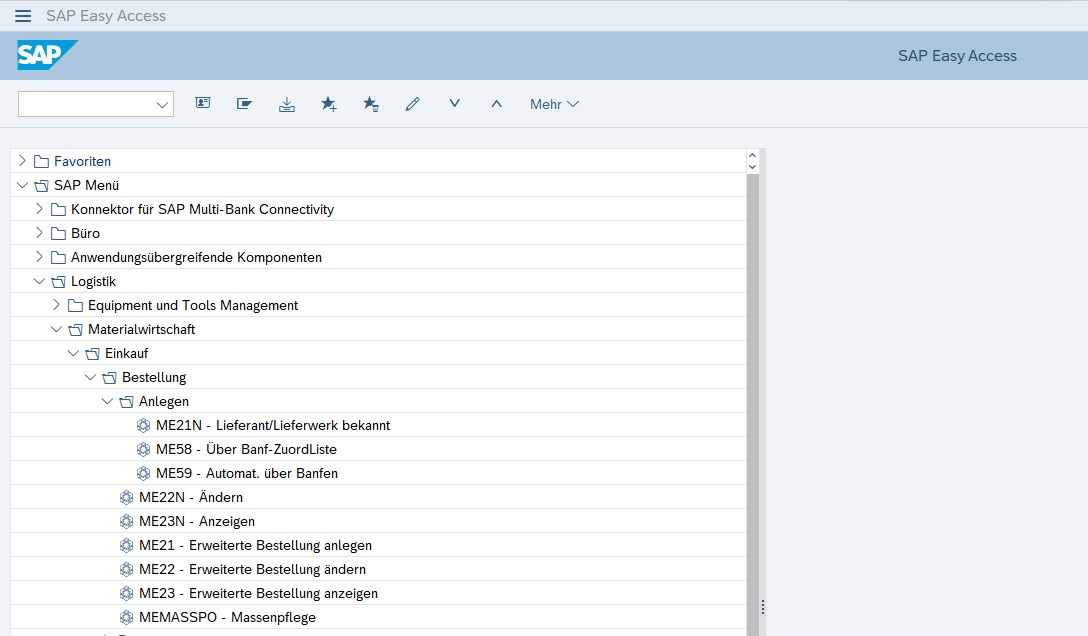
Selection of supplier and material
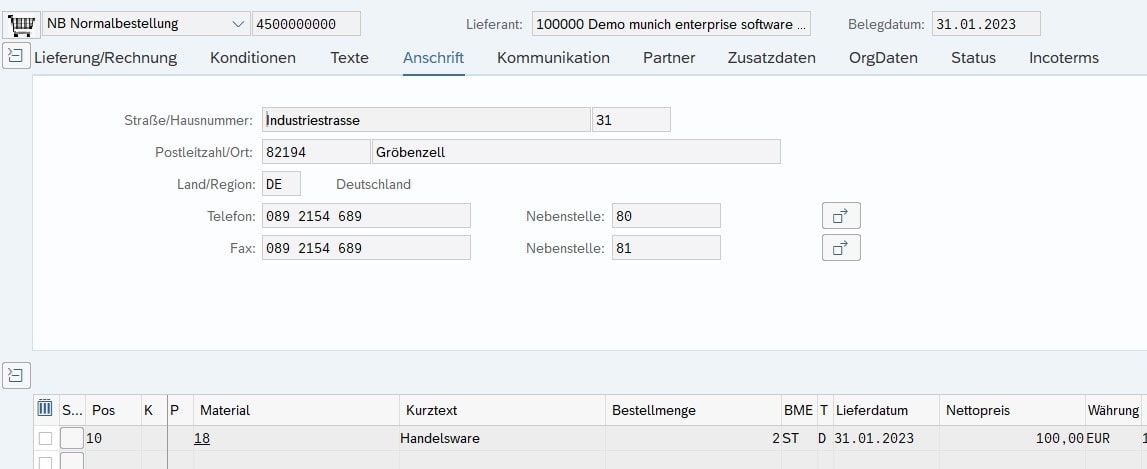
- Determining requirements
- Identification of sources of supply
- Selecting suppliers
- Comparing offers
These features can help you choose the best possible business partner for your needs. After you have selected the supplier, the next step is to select the material. This is done by:
- Selection of the desired materials
- Search in the inventory and demand overview
- Checking the availability of material using the collective availability check in the SAP information system
With this information, you can ensure that you choose the right material for your needs.
Input of quantities and prices
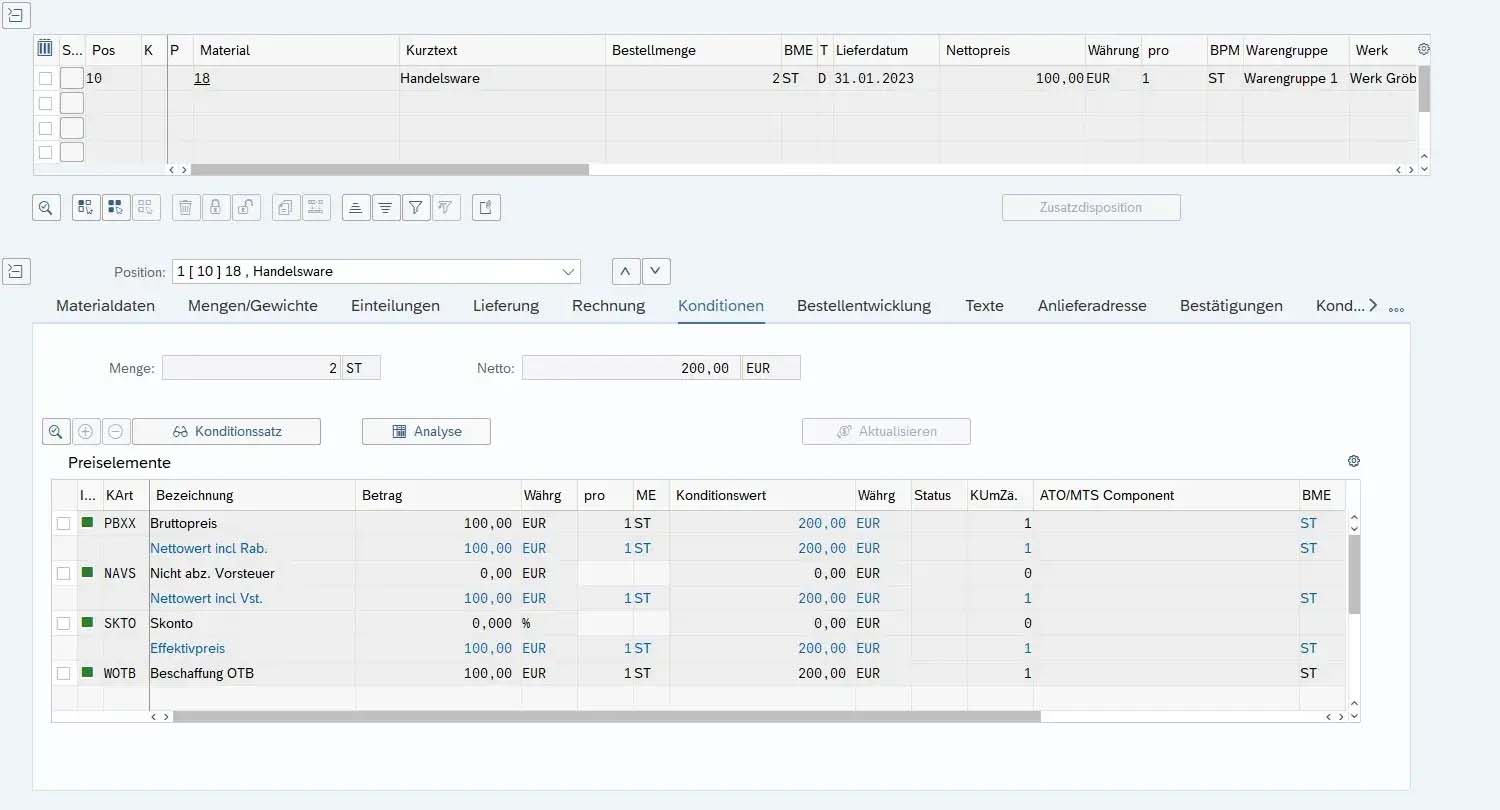
- Speed up ordering processes
- Avoid manual transfers to the SAP system
- Use internal audit logics to reduce the error rate in price maintenance.
Determination of terms of delivery and terms of payment

- In the SAP menu, navigate to Logistics > Materials Management > Purchasing > Ordering.
- Use the ‘View/Change’ button or press the F7 key to open the order details.
- Change the desired terms of delivery.
- Save the changes.
We have now completed the process of modifying an SAP purchase order. But what if we want to change or display an order?
Displaying and Changing SAP Purchase Orders
It may happen that you need to change or display an order after it has been created. In SAP, the transaction codes ME21N, ME22N, and ME23N are used to change and display purchase orders. These transaction codes are key components in SAP and give you the flexibility to manage your orders as needed. To modify a purchase order in SAP, follow these steps:
- Select “Inventory” from the main menu.
- Select “Orders”.
- Select “See All”.
- Select the order you want to change.
With these steps, you can ensure that your orders are always up to date and meet your needs. However, it is important to note that an order that has already been completed cannot be changed directly in SAP. In such cases, it is possible to make a correction or cancellation booking to change the order. This ensures that your orders are accurate and up-to-date even after the closing phase.
Monitoring and analysis of orders
In addition to creating and changing purchase orders, monitoring and analyzing purchase orders is an important aspect of optimizing the purchasing process. The purchasing process can be streamlined by monitoring orders by:
- the purchasing requirements are specified
- a supplier is selected
- the supplier is commissioned
- an order is placed
- Orders are monitored
This monitoring can help make the entire process more efficient and effective. SAP provides various tools for analyzing purchase orders, including selecting relevant demand documents such as sales orders and stock transfer orders, as well as the MRP tool to automate material tracking and ordering. By using these tools, you can keep track of your orders and ensure that your purchasing process runs smoothly and efficiently. However, it is important to note that monitoring and analyzing orders is not limited to just observing the orders. It is also necessary to analyze the data and look for ways to optimize it. With the right tools and analysis, you can continuously improve your purchasing process and manage your orders efficiently and effectively.
Purchase Order Items and Account Assignment
Purchase order items and account assignment play an important role in SAP purchase orders. Purchase order lines in SAP represent the individual items of a purchase order and contain information such as:
- Material
- Quantity
- Price
- Supplier
Each line item in a purchase order carries specific information that helps track and manage the process. Purchase order items can be created and managed digitally in SAP in a clear and central way. In addition, an app is available with which orders can be created, managed and searched. With this app, you will have access to your orders at all times and will be able to manage them efficiently. Account assignment in SAP Purchase Orders refers to the assignment of one or more account assignments to a purchase order item, for example, to enable the allocation of costs to different accounts. Account assignment of purchase orders in SAP is carried out by assigning one or more account assignments to each item. Multiple account assignment makes it possible to distribute the costs of an order proportionately to different accounts.
SAP Orders in S/4HANA: New Features and Benefits
With the introduction of SAP S/4HANA, many new features and benefits have been added that further improve the ordering process. SAP S/4HANA brings significant improvements compared to older versions, especially in terms of simplicity, digitalization, and simplification of business processes. These improvements can help make the entire process more efficient and effective. A new feature in SAP S/4HANA Sales is the provision of a Fiori app for creating sales orders. With this app, you can create, manage and view your orders quickly and easily. In addition, several new features have been added to the Gantt chart for maintenance orders that can help you better manage and monitor your orders. Using SAP purchase orders in S/4HANA provides organizations with the following benefits:
- Adaptability to industry-specific requirements
- Creating transparency
- Improved order frequency and flexibility
- Cost savings
- Faster analyses thanks to the in-memory database
With these new features and benefits, SAP S/4HANA can help make your ordering process even more efficient and effective.
Purchase Requisitions and Procurement Types
Purchase requisitions and various procurement types in SAP can have a significant impact on the purchasing process. Purchase requisitions in SAP are manual or automatic requisitions that the purchaser creates to contain information such as:
- Creditor
- Cost
- Article
- Cost per piece
- Delivery
- Delivery
Set. These requirements act as triggers for the procurement process in SAP and can help keep your purchasing process running efficiently and effectively. There are several types of procurement processes in SAP, including:
- Needs assessment
- Determination of sources of supply
- Supplier Selection
- Order processing
These different types of processes can help ensure that you choose the best possible process for your specific needs. The differences between the types of procurement in SAP are mainly due to the separation between external procurement and in-house production. In addition, there are special procurement types such as subcontracting, consignment, stock transfer, and service that provide additional options for supply chain management. With these options, you can ensure that you choose the best sourcing method for your specific needs.
Summary
In the course of this article, we discussed the basics of SAP purchase orders, creating purchase orders, changing and displaying purchase orders, monitoring and analyzing purchase orders, purchase order items and account assignment, the new features and benefits of SAP purchase orders in S/4HANA, as well as purchase requisitions and procurement types. Each of these aspects plays a crucial role in the ordering process and helps to make this process efficient and effective. With this knowledge, you’re now ready to manage your SAP orders like a pro!
Frequently Asked Questions
What is an SAP order?
An SAP purchase order is a procurement order in which a customer requests an external company to deliver certain quantities of products, defined as “the request of a purchasing organization to a supplier to deliver a certain amount of materials or services at a specified time.”
What form can an order take?
An appointment can be made in the form of an application or an acceptance in accordance with the legal provisions (BGB §§ 145 et seq.). It can be written, electronic or oral and can be either binding or non-binding. There is no fixed form to which the acceptance of an order is bound. It can be verbal, written or even by immediate delivery.
How can I copy a purchase order in SAP?
To copy a purchase order in SAP, you can open the desired purchase order and select the “Copy Record” option. You can then edit and submit the copied order to complete the process.
What types of orders are available in SAP?
There are three main types of purchase orders in SAP: standard purchase orders, blanket purchase orders, and delivery schedules. It’s important to understand these in order to optimize purchasing with SAP S/4HANA.

Success Story SAP Purchasing Documents – Dr. August Oetker Nahrungsmittel KG

